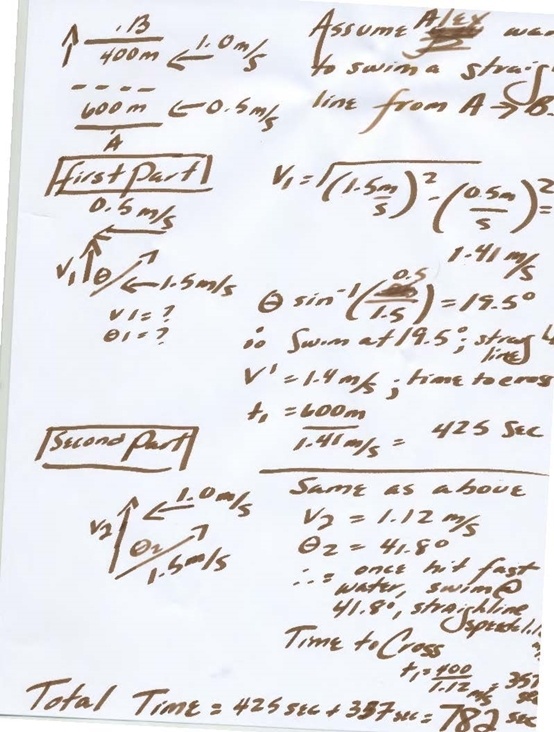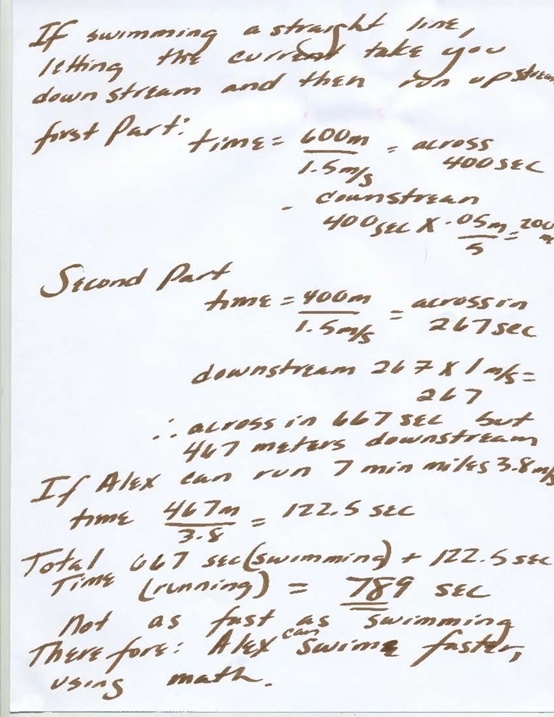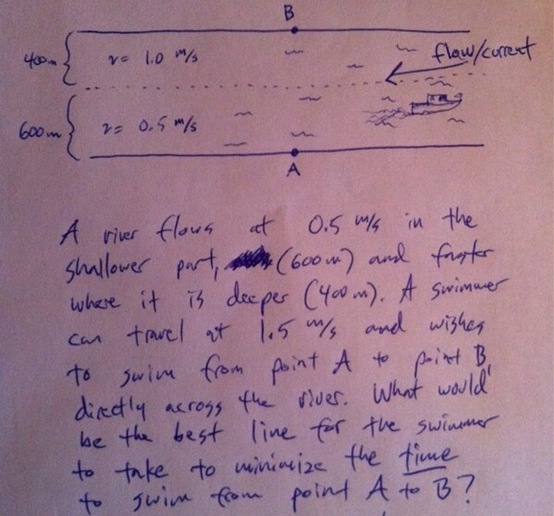Courtesy of Eney Jones
“You just keep pushing. You just keep pushing. I made every mistake that could be made but I just kept pushing.”
René Descartes, French Philosopher and Mathematician
It is no surprise then that some of the greatest open water swimmers are some of the most intelligent people you will ever meet, examples are, Eva Fabian (Yale student) Alex Meyer (Harvard graduate) Alex Kostich (Stanford graduate). As Seneca, the Greek Philosopher said, ”Luck happens when preparation meets opportunity”. The better prepared you are, the better your luck will be.
Open water swim racing preparation and strategy includes doing some math calculations involving numerous factors including:
- Water temperature and air temperature
- Tides and currents
- Wind and waves
- Water salinity
- Tidal coefficient
- Sun position
Alex Kostich, multiple winner of the Waikiki Rough Water swim, advises us to do the race finish at the exact same time you will be finishing the day before the race. This he adds will help you navigate that tricky finish and spot landmarks to expedite your finish.
The below equation was made by Alex Meyer, World Open Water 10k Champion, 2012 Olympian, and Harvard graduate, in preparation for a race.
Swimming technique to me is an equation. S= D+P+L+T . Swimming = Depth + Power + Length + Tempo. Much of my technique struggle is how to get one without losing the others.
Water temperature and air temperature. Water temperature and air temperature are important as to what you should wear and how you should hydrate. Do you need to talk salt tablets or potassium?
Tides and currents. Tides and currents can make the same swim incredibly different on a daily basis. A good site for this is on the National Oceanic and Atmospheric Administration website (See NOAA). If it is strong you will want a higher tempo with a committed long anchor catch to hold your line.
Wind and waves. Wind and waves make a difference in how high you want the recovery part of your stroke.
Water salinity. Water salinity will affect how you float. If it is high it will be like pulling with a buoy or wearing a wetsuit
Tidal coefficient. The tidal coefficient is the difference between high and low tides. This will be greater during full or new moons.
Sun position. The sun position will affect your navigational abilities and pack spotting abilities.
Math is the study of quantity, structure, space and change. Four things that are present in open water racing. And if you are still wondering about Alex’s problem; I solved it here:

Courtesy: Eney Jones

Courtesy: Eney Jones
Eney Jones has achieved remarkably diverse success as a leading pool, open water and Ironman triathlon swimmer, and is also a yoga instructor.
- Masters National Champion 100-200-400-500-1500-1650 5k freestyle 2009
- Open Water 5k Champion Perth Australia, May 2008.
- National Masters Champion 200-400-1500 freestyle Champion, Portland Oregon, August, 2008.
- Overall Champion Aumakua 2.4k Maui Hawaii, September 2008
- Waikiki Rough Water Swim 3rd place 2006, second place Overall 2009, 3rd place 2012
- European Record Holder and Masters Swimming Champion, 2005. Records included 200, 400, 800, 1500 m freestyle
- Over twenty time finalist in U.S. Swimming Nationals, including Olympic Trials 1980
- Gold medal NCAA 800 yd freestyle relay 1979, silver Medalist 200 yd freestyle 1979. United States National Team 1979-1980.
- Professional Triathlete 1983-1991. First woman out of the water in every Hawaiian Ironman participated (6).
More about Eney Jones
More about René Descartes

